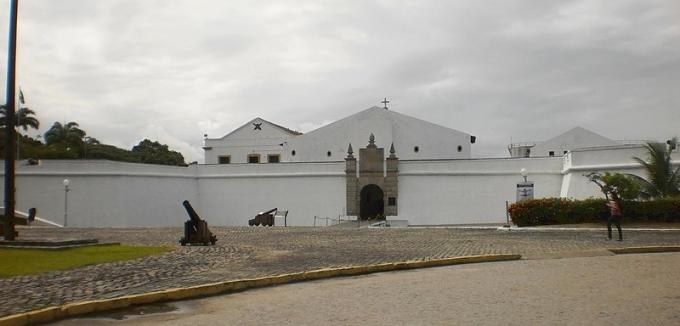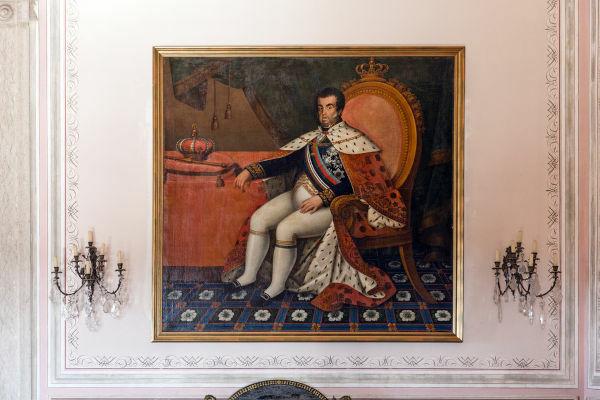THE Brasilia construction it was the realization of a national project that had existed since the 19th century, whose aim was to take the capital of our country to the central plateau. This work took place between 1957 and 1960 and was made possible by government of Juscelino Kubitschek.
Juscelino conceived the construction of Brasília to be the perfect synthesis of his plan to modernize Brazil. During the works, the president spared no resources so that the city designed by Oscar Niemeyer and Lúcio Costa could be built. The workers who made it became known as candangos. the city was opened on April 21, 1960.
Accessalso: Citizen Constitution, the Constitution that is in force in our country
JK government
![The construction of Brasília was carried out between 1957 and 1960, during the government of Juscelino Kubitschek.[1]](/f/07bff6144f49bec06f2445ac0503e567.jpg)
The construction of Brasília was carried out in the second half of the 1950s, during the government of Juscelino Kubitschek. This was a period of political unrest and relative economic development in our country. Kubitschek was elected president after winning a tight race in the
1955 election, getting 36% of votes.JK was a traditional picture of the Social Democratic Party (PSD), the biggest party in Brazil during the Fourth Republic. He had been mayor of Belo Horizonte and governor of Minas Gerais, and, in the electoral dispute, he promised to implement a development projectandindustrializationofBrazil. In his campaign slogan, he proposed to advance Brazil “50 years in 5”.
Your victory started a political crisis, since the National Democratic Union (UDN), the opposition party, did not accept that power remained in the hands of the allies of Getulio Vargas. One coup began to be articulated against his possession, but Henrique Teixeira Lott, minister of war, performed a kickback in November 1955, securing JK's tenure on January 31, 1955.
economic developmentalism
The construction of Brasília was the most symbolic event of the aforementioned Brazilian economic development project, which sought to invest heavily in areas understood to be strategic. This project was part of a conception of a new Brazil.
This prioritization of economic development is known by experts as developmentalism, and, in JK's government, it was manifested by the Goals plan. This economic plan aimed to structure the way for the government to carry out the country's development in the five years of JK's term.
The Targets Plan was implemented on February 1, 1956, the second day of JK's government. he stipulated 31 goals to be fulfilled within five strategic areas of the country: energyelectric, transport (infrastructure), industryinbase, food and education. The Plan caused a great mobilization of the government for these areas to be developed (food and education were less prioritized and received few resources).
The Plan was a success, bringing significant results in the areas of industry, electricity and transport. Much of this success was due to the construction of Brasília, as it moved the economy and mobilized a vast amount of resources to make the transfer of the capital feasible.
Do not stop now... There's more after the advertising ;)
When did the idea of transferring the capital arise?
The idea of transferring the capital to the interior of Brazil existed since the 19th century. José Bonifácio de Andrada e Silva, known as the patron of independence of Brazil, suggested, in 1823, the transfer of the country's capital to the interior as a way to protect it from possible attacks carried out by foreign forces. He even suggested the name “Brasilia” for the new capital.
This idea did not gain substance and remained forgotten throughout the monarchic period. With the Proclamation of the Republic, in 1889, a new government took over the power of Brazil and a new constitution was elaborated in 1891. This Constitution determined, in one of its articles, that a region of the central plateau would be reserved to, in the future, house the country's new capital.
![Photos of the central plateau in studies carried out during the government of Eurico Gaspar Dutra.[1]](/f/d31811d8cea2fc4b015655f5b7412207.jpg)
With that, a series of studies and works were inaugurated to make this project viable. O president Floriano Peixoto created the Exploration Commission of the Central Plateau of Brazil, who performed the MissionCruel, responsible for sending a group to the central plateau in order to study and delimit the area that would receive the new capital. The works linked to this commission were carried out until 1897.
In 1922, the president Epitacio Pessoa laid the foundation stone of the new capital in Planaltina, and then only Eurico Gaspar Dutra and Getulio Vargas, in the 1940s and 1950s, carried out minimal actions in this regard. That's because the 1946 Constitution it also brought the possibility of transferring the capital.
Historians claim that, in the memoirs left by Juscelino, he attributed the project to build the new capital to a sudden action, almost by chance. Many historians question this information, demonstrating that the construction of Brasilia actually fulfilled many political purposes for him.
Accessalso: Vice presidents who took over the government of Brazil
How was the construction of Brasilia?
It is said that the starting point for Juscelino Kubitschek to build a new capital for Brazil, during your election campaign. In 1955, at a rally held in Jataí, a city in the state of Goiás, Juscelino was questioned by a voter named Antônio Soares Neto on the construction of a new capital in compliance with the Constitution.
Juscelino's response was to affirm that he would obey the Constitution and that he would put the project into practice. This story is often told to explain where and when this idea was born in JK. When he assumed the presidency, the project to build Brasília was taken to Congress and approved on September 19, 1956.
THE Law No. 2874 inaugurated the construction process of the new capital and named it Brasília. For the work to be carried out, the government created the New Capital Urbanization Company, company known as Novacap. Juscelino handed over her command to a person he trusted, the engineer and PSD deputy IsraelPine.
This strategy was widely used by JK in the construction of the new capital. He appointed technicians and specialists he trusted in key posts in the work and gave them carte blanche to build the city. The president also spared no resources, and an exhausting working day was implemented to meet the capital's deadline.
The architect of the building was Oscar Niemeyer, director of the Department of Architecture at Novacap. The urban design was designed by Lúcio Costa, architect who achieved this role after being announced as the winner of the contest organized by Novacap for this purpose (to obtain the urban project), in 1957.
The four most important men in the construction of Brasília, therefore, were:
juscelinoKubitschek, president who spared no resources or efforts to build Brasília;
IsraelPine, director of Novacap;
oscarNiemeyer, architect who designed the main buildings in Brasília;
PikeCoast, developer of the city's urban project.
THE Brasília was built amid numerous challenges. The city with the closest airport, Anápolis, was more than 100 km away, and the roads that connected to Brasília were unpaved. All the material needed to make the work feasible was taken to Brasília with great difficulty. In addition, the fact that everything was taken by plane increased the costs of the work.
From a human point of view, the construction of Brasília also had a high cost. Most of the workers came from the Northeast, but many also came from Goiás and Minas Gerais and became known as candangos. The work was exhausting, the living conditions were poor, and the workers still suffered from the violence of the authorities, there were even cases of them being murdered by the police forces.
![On April 21, 1960, the city designed by Oscar Niemeyer and Lúcio Costa was inaugurated.[1]](/f/c4cf5f747d2c774ab56ec02580a0b8f3.jpg)
The city of Brasília was designed to be the symbol of JK's modernization and development project. The city's innovative architecture conveyed this idea, and the project materialized the ideal of the president of interconnect the two Brazils (coast and interior) as a key moment for the formation of a new, more modern and developed territory.
The construction of Brasilia had the strong UDN opposition. The udenistas took advantage of the situation to attack Juscelino's government, and the excessive spending on the construction of the new capital was harshly criticized. Despite criticism, Juscelino's intent was successful, and on April 21, Brasília, the new Brazilian capital, was officially inaugurated. To this day, he doesn't know how much was spent to build it.
Image credits
[1] FGV/CPDOC
By Daniel Neves
History teacher



